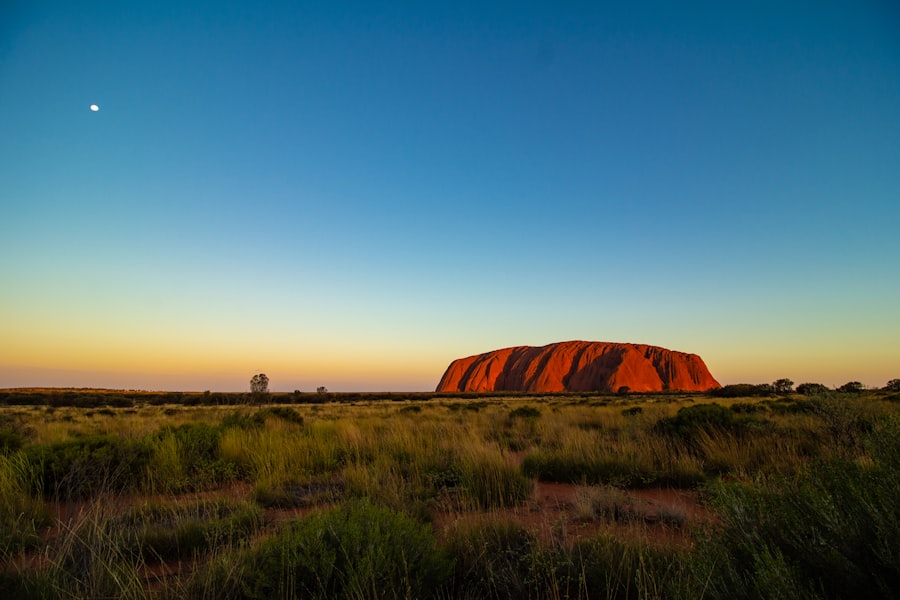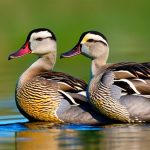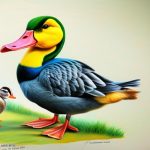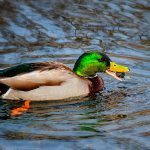Ducks have been a part of Australian agriculture for many years, providing a valuable source of meat, eggs, and feathers. There are several different breeds of ducks that are popular in Australia, each with its own unique characteristics and traits. These breeds have been carefully developed over time to suit the Australian climate and environment, and they play an important role in the country’s agricultural industry. From the hardy and adaptable Pekin duck to the colorful and ornamental Indian Runner duck, there is a wide variety of duck breeds to choose from in Australia. In this article, we will explore the popular duck breeds in Australia, their characteristics and traits, their uses and purposes, as well as the care and maintenance required to raise them successfully. We will also discuss the challenges and considerations that come with raising duck breeds in Australia, and the future of duck farming in the country.
Table of Contents
- 1 Popular Duck Breeds in Australia
- 2 Characteristics and Traits of Different Duck Breeds
- 3 Uses and Purposes of Duck Breeds in Australia
- 4 Care and Maintenance of Duck Breeds in Australia
- 5 Challenges and Considerations in Raising Duck Breeds in Australia
- 6 Conclusion and Future of Duck Breeds in Australia
- 7 FAQs
- 7.1 What are the most common duck breeds in Australia?
- 7.2 What are the characteristics of Pekin ducks?
- 7.3 What are the characteristics of Khaki Campbell ducks?
- 7.4 What are the characteristics of Indian Runner ducks?
- 7.5 What are the characteristics of Muscovy ducks?
- 7.6 Are there any native duck breeds in Australia?
Key Takeaways
- There are several different duck breeds in Australia, each with their own unique characteristics and traits.
- Some popular duck breeds in Australia include the Pekin, Khaki Campbell, and Indian Runner.
- Different duck breeds have varying characteristics and traits, such as egg-laying abilities, foraging behavior, and temperament.
- Duck breeds in Australia are used for purposes such as egg production, meat, pest control, and as pets.
- Care and maintenance of duck breeds in Australia involves providing proper housing, nutrition, and protection from predators, as well as regular health checks and grooming.
Popular Duck Breeds in Australia
One of the most popular duck breeds in Australia is the Pekin duck. Known for its large size, white feathers, and orange bill, the Pekin duck is a favorite among farmers for its meat production. They are also known for their calm and friendly temperament, making them easy to handle and raise. Another popular breed is the Khaki Campbell duck, which is prized for its high egg production. These ducks are excellent layers, often producing over 300 eggs per year. The Indian Runner duck is another popular breed in Australia, known for its upright stance and distinctive coloring. They are often kept for their ornamental value and are also good layers. Other popular duck breeds in Australia include the Muscovy duck, known for its lean and flavorful meat, and the Rouen duck, which is prized for its beautiful plumage.
Characteristics and Traits of Different Duck Breeds
Each duck breed has its own unique characteristics and traits that make it well-suited for specific purposes. The Pekin duck, for example, is known for its large size and rapid growth rate, making it an excellent choice for meat production. They are also known for their calm and friendly temperament, making them easy to handle and raise. The Khaki Campbell duck, on the other hand, is prized for its high egg production, often laying over 300 eggs per year. They are also known for their excellent foraging abilities and adaptability to different environments. The Indian Runner duck is known for its upright stance and distinctive coloring, making it a popular choice for ornamental purposes. They are also good layers, making them a versatile breed for both meat and egg production. The Muscovy duck is known for its lean and flavorful meat, as well as its ability to forage for food on its own. The Rouen duck is prized for its beautiful plumage, making it a popular choice for ornamental purposes.
Uses and Purposes of Duck Breeds in Australia
Duck breeds in Australia serve a variety of purposes, including meat production, egg production, pest control, and ornamental value. The Pekin duck is primarily raised for meat production due to its large size and rapid growth rate. Their calm temperament also makes them easy to handle and raise, making them a popular choice among farmers. The Khaki Campbell duck is prized for its high egg production, often laying over 300 eggs per year. They are also excellent foragers and adapt well to different environments, making them a versatile breed for egg production. The Indian Runner duck is often kept for its ornamental value due to its upright stance and distinctive coloring. They are also good layers, making them suitable for both meat and egg production. The Muscovy duck is known for its lean and flavorful meat, as well as its ability to forage for food on its own. They are also used for pest control due to their voracious appetite for insects. The Rouen duck is primarily kept for its ornamental value due to its beautiful plumage.
Care and Maintenance of Duck Breeds in Australia
Raising duck breeds in Australia requires proper care and maintenance to ensure their health and well-being. Ducks need access to clean water for drinking and bathing, as well as a balanced diet that includes grains, greens, and protein sources. They also need shelter to protect them from predators and the elements, as well as nesting boxes for laying eggs. Proper fencing is also important to keep ducks safe from predators such as foxes and birds of prey. Regular health checks and vaccinations are also essential to prevent diseases and parasites. Ducks also need space to roam and forage for food, so providing a large outdoor area is important for their physical and mental well-being. Overall, raising duck breeds in Australia requires dedication, knowledge, and attention to detail to ensure their welfare.
Challenges and Considerations in Raising Duck Breeds in Australia

Raising duck breeds in Australia comes with its own set of challenges and considerations. One of the main challenges is predator control, as ducks are vulnerable to attacks from foxes, birds of prey, and other animals. Proper fencing and secure housing are essential to protect ducks from predators. Disease management is another consideration, as ducks are susceptible to various illnesses and parasites that can affect their health and productivity. Providing proper nutrition is also important, as ducks require a balanced diet that includes grains, greens, and protein sources. Another consideration is water management, as ducks need access to clean water for drinking and bathing. Managing water quality and preventing waterborne diseases is essential for their health. Overall, raising duck breeds in Australia requires careful planning and management to overcome these challenges and ensure their well-being.
Conclusion and Future of Duck Breeds in Australia
In conclusion, duck breeds play an important role in Australian agriculture, providing valuable resources such as meat, eggs, feathers, pest control, and ornamental value. Each breed has its own unique characteristics and traits that make it well-suited for specific purposes, whether it’s meat production, egg production, or ornamental value. Raising duck breeds in Australia requires proper care and maintenance to ensure their health and well-being, as well as overcoming challenges such as predator control, disease management, nutrition, and water management. The future of duck breeds in Australia looks promising as they continue to be an important part of the country’s agricultural industry, providing sustainable sources of food and resources for the future. With proper management and care, duck breeds will continue to thrive in Australia’s diverse agricultural landscape.
If you’re interested in learning more about duck breeds in Australia, you might also find our article on “How Many Chickens Do You Need for a Family of 4?” to be helpful. Understanding the right number of chickens for your family’s egg and meat needs is essential for sustainable poultry keeping. Check out the article here. Additionally, if you’re considering building a garden chicken coop or looking for tips on creating a comfortable living space for your feathered friends, our article on “The Chicken Coop Country Diner” offers valuable insights.
FAQs
What are the most common duck breeds in Australia?
The most common duck breeds in Australia include the Pekin, Khaki Campbell, Indian Runner, and Muscovy.
What are the characteristics of Pekin ducks?
Pekin ducks are known for their white feathers, orange beaks, and calm temperament. They are a popular choice for meat production and are also kept as pets.
What are the characteristics of Khaki Campbell ducks?
Khaki Campbell ducks are known for their khaki-colored feathers, excellent egg-laying abilities, and friendly disposition. They are a popular choice for backyard egg production.
What are the characteristics of Indian Runner ducks?
Indian Runner ducks are known for their upright posture, distinctive appearance, and excellent foraging abilities. They are often kept for their egg-laying capabilities and pest control in gardens.
What are the characteristics of Muscovy ducks?
Muscovy ducks are known for their unique appearance, quiet nature, and ability to fly. They are often kept for meat production and pest control.
Are there any native duck breeds in Australia?
Yes, the Australian Wood Duck, also known as the Maned Duck, is a native duck species found in Australia. It is known for its distinctive appearance and is often seen in wetlands and waterways across the country.
Meet Walter, the feathered-friend fanatic of Florida! Nestled in the sunshine state, Walter struts through life with his feathered companions, clucking his way to happiness. With a coop that’s fancier than a five-star hotel, he’s the Don Juan of the chicken world. When he’s not teaching his hens to do the cha-cha, you’ll find him in a heated debate with his prized rooster, Sir Clucks-a-Lot. Walter’s poultry passion is no yolk; he’s the sunny-side-up guy you never knew you needed in your flock of friends!







